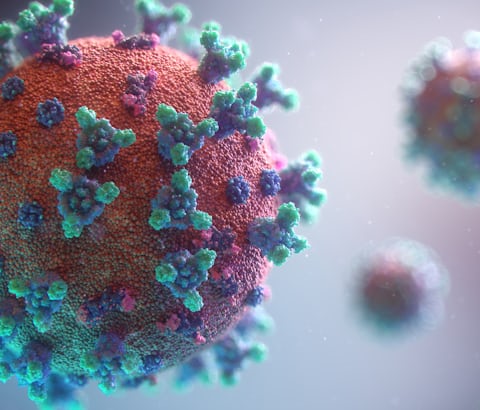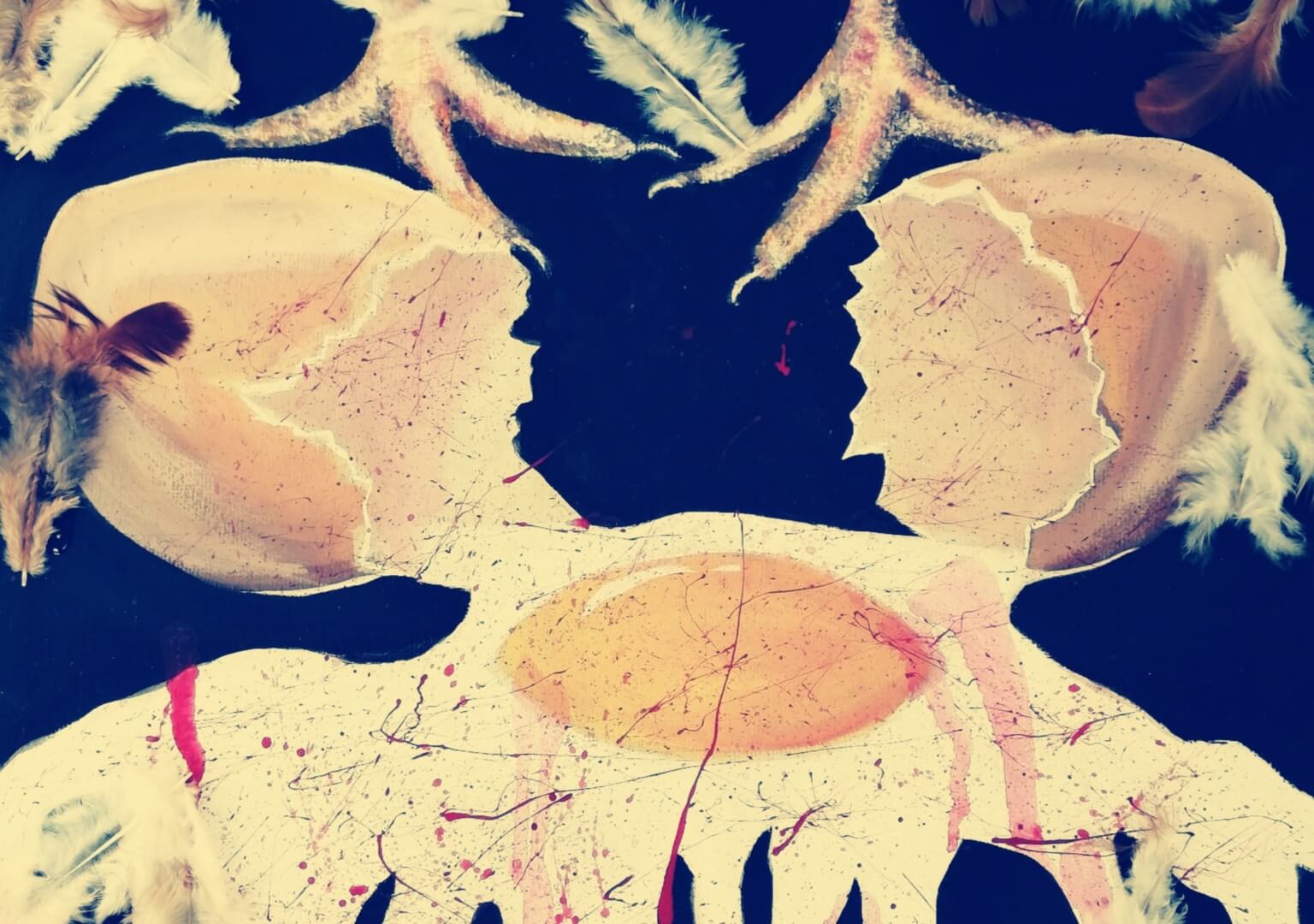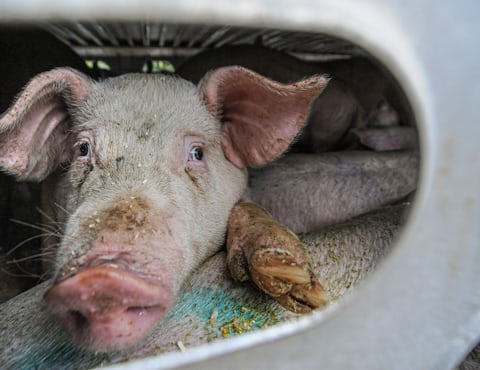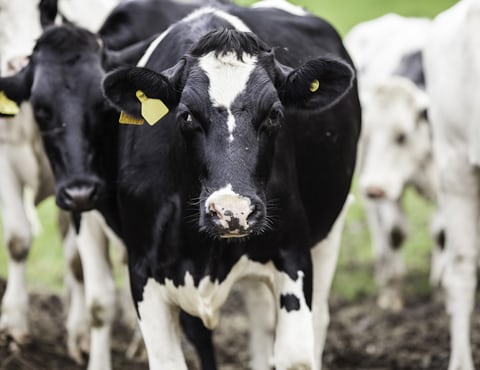Are we courting another pandemic?
Vegan Society of Canada News
August 12th 2020
As we do our part by wearing masks and physically distancing, experts and government agencies are trying to contain and control COVID-19, while the cost is spiralling out of control. But it seems we need to be reminded that, most regrettably, we brought this upon ourselves.
Earlier this year, we wrote about the correlation between animal exploitation and pandemics; unfortunately, the chaos and loss of lives caused by COVID-19 wasn’t enough of a warning since scientists in China have uncovered another potential pandemic-causing virus, this time originating from pigs.
Our exploitation of pigs over the years has caused various diseases, and now scientists are warning us again of a mutation of the H1N1 virus called the G4 EA H1N1. During the first year of the pandemic flu of 2009, the upper range of deaths was estimated at 575,000 people worldwide. While that number can be compared with the estimated 500,000 deaths globally from the average seasonal flu, the difference in the case of the pandemic flu is that 80 percent of the deaths were of people aged 65 or younger, while in a typical flu season most deaths occur in people aged 65 or older.
It seems through more extensive exposure between non-human animals and human animals, this strain has developed an increased capacity to infect human animals.
These results demonstrate that the newly prevalent G4 reassortant EA H1N1 viruses in pigs are more infectious to humans than their predecessors of G1 viruses.
Usually there is a balance between the ease of spread of a virus and its ability to cause death, but this is unknown at this time about this strain. It is too early to tell, but scientists have observed the ability of G4 EA H1N1 to cause severe infection and even death.
The first three cases were children under 3 y old, but the latest two cases, reported in 2016 and 2019, were of a 46- and a 9-y-old, respectively. Genetic analysis indicated that the latter two cases were caused by G4-like EA H1N1 virus. Epidemiological survey found that the two patients had neighbors who reared pigs, suggesting that G4 EA virus could transmit from swine to human, and lead to severe infection and even death.
It is difficult to understand how much of a breeding ground for pandemics animal agriculture is. However, to try to explain the enormity of the problem, we will discuss briefly the various mutations being monitored of the HA genes of EA H1N1 strains of viruses in pigs—in China alone—due to their potential ability to cause the next pandemic in human animals.

(A) Phylogeny and divergence time of the HA gene and genotype evolution of EA H1N1 SIVs. (B) Diversity of genotypes of EA viruses isolated from swine in China, 2011–2018.
The graph above when expanded to be clearly readable would take many pages. More worrisome, it also shows that the more infectious strain of G4 took over in recent years and the potential is great for it to become the next pandemic. The authors of the research remind us of the danger of our continuous exploitation of animals:
G4 genotype of reassortant SIVs, identified in the present study, possesses all of the essential hallmarks of a candidate pandemic virus.
It is of concern that human infection of G4 virus will further human adaptation and increase the risk of a human pandemic.
Unfortunately, the economic externalities of animal agriculture, like their contribution to our climate crisis and the cost of pandemics, are borne by society at large while corporations privatize profits. If all those externalities were properly reflected in the cost of various products, very few people would be able to afford traditional meat or dairy.
Regrettably, an appeal to ethics is often not enough to move society forward; that is why it is crucial we use our subsidies wisely to encourage behaviour that is beneficial to society while discouraging others that are detrimental.
Canada’s Food Guide, like the Lancet planetary diet, encourages people to shift to a plant-based world, but the rest of government policy has not followed. Current climate discussions include whether animal agriculture could be accounted for in targets and negotiations, which should globally encourage governments to hold that sector accountable for their externalities. The hope is that this will realign subsidies with current health and environmental goals.
As we’ve expressed before, the researchers in this paper have a different way of addressing this problem than we have:
In summary, G4 EA H1N1 viruses possess all the essential hallmarks of being highly adapted to infect humans. Controlling the prevailing G4 EA H1N1 viruses in pigs and close monitoring of swine working populations should be promptly implemented.
Why is it that whenever we are faced with a sinking boat we go into elaborate details about efficient mechanisms to pump water instead of plugging the hole? Our exploitation of animals is the hole. Help us plug it.
A change of lifestyle offers individuals a powerful means to combat a range of issues, including personal health problems, climate change, loss of biodiversity, global acidification, eutrophication, freshwater shortages, pandemic prevention, antibiotic resistance, save countless lives and much more. We know of no other efficient way for individuals to address these critical challenges simultaneously without waiting for government, corporate, or technological interventions. By changing lifestyle, people can take immediate and impactful action. We encourage you to embrace this lifestyle change today. Contact us for support and to connect with local communities in your area.




